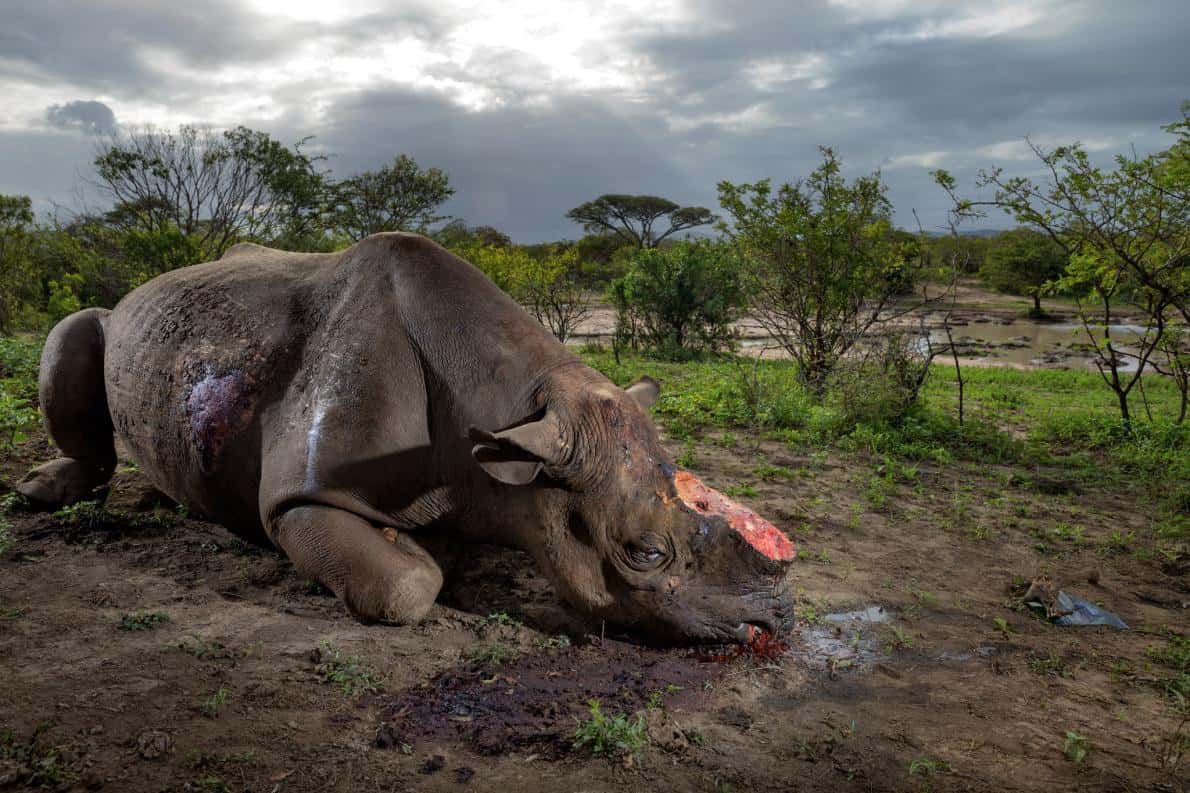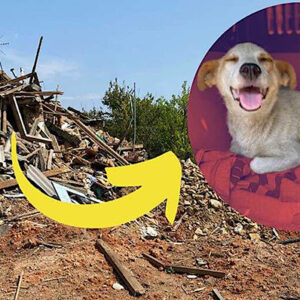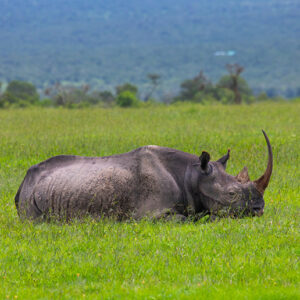
A rhino’s horn may be predominantly composed of keratin (the same material as one’s fingernails), but that hasn’t deterred poachers from seeking out the large land mammals and slaughtering them in Kruger National Park (KNP), South Africa. In fact, between March 4 and March 22, sixteen rhino carcasses were found in the National Park; only two were older than two months.
South African National Parks (SANParks) Senior Investigator for Environmental Crime Investigations, Frik Rossouw, told the press:
“Three of the rhinos were found dead but their horns were still intact. We don’t know what the cause was. It could be natural causes such as old age disease or they could have died in a fight. We will do a post-mortem on the animals.”
Media members who were present followed an environmental inspector, a police detective, and a police forensic officer to one of the crime scenes. There, they found a carcass which had been discovered a few days prior. The body was already beginning to rot. Upon being opened, a bullet was discovered.
Rossouw stated that the police are responsible for registering a docket, as well as supplying a statement on what was found before the forensic officer collects evidence. The Senior Investigator commented:
“Our role is to process the scene but the scene is a couple of days old so we won’t find much because hyenas, lions, vultures have been on the scene and they tend to carry evidence away with them or contaminate the scene. We won’t find a lot here apart from ballistics.
“If it’s a fresh scene, we process the scene ourselves, search the scene, find evidence and lastly we do a post-mortem on the animal to retrieve evidence — not to establish cause of death because we are not veterinarians,” he added.
SANParks Chief Ranger Nicholas Funda admitted that one of the main points of entry for poachers is the front gates. The wildlife hunters who enter are referred to as ‘drop-offs’, as they remain in the park to track animals even after their driver exits. Fonda commented:
“We realised that the gates became our weakest point… Some of the poachers are paying at the gate as guests. For example, when they come in, there are four of them in a vehicle and on the way out, there is only the driver. […] Drop-offs are a problem because we can’t track their spoor in the veld.”

Related: Last Northern White Rhino Joins Tinder As “World’s Most Eligible Bachelor”
It’s for this reason that Kruger is tightening security at its southern gates in an attempt to protect rhinos and prevent poachers from accessing the park. Guests who visit are expected to produce a permit and up-to-date vehicle registration. The number of guests who enter and exit will also be followed up on more closely.
According to data released by the Environmental Affairs Minister, Edna Molewa, a total of 662 rhino carcasses were discovered in the National Park last year. As 826 were found in 2015, this represents a reduction of 19.85%. However, those numbers are both substantial, leading one to conclude that more needs to be done to cut down on poaching.
One of the tactics presently being relied upon by KNP is a K9 anti-poaching unit of 53 dogs. According to SANParks K9 Manager Johan De Beer,
“We have one of the most successful units. Last year, we had about 200 arrests and the dogs were responsible for 168 of those arrests. They are doing very well. I don’t think we would be able to do the job without the dogs.”
What are your thoughts? Please comment below and share this news!


